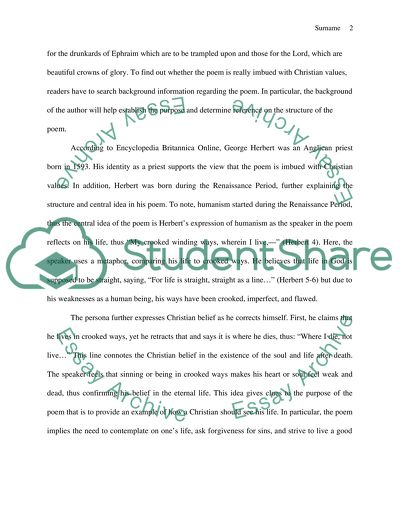Cite this document
(“Exploring Christian Values in George Herberts Poem A Wreath Research Paper”, n.d.)
Exploring Christian Values in George Herberts Poem A Wreath Research Paper. Retrieved from https://studentshare.org/literature/1593396-exploring-christian-values-in-george-herberts-poem-a-wreath
Exploring Christian Values in George Herberts Poem A Wreath Research Paper. Retrieved from https://studentshare.org/literature/1593396-exploring-christian-values-in-george-herberts-poem-a-wreath
(Exploring Christian Values in George Herberts Poem A Wreath Research Paper)
Exploring Christian Values in George Herberts Poem A Wreath Research Paper. https://studentshare.org/literature/1593396-exploring-christian-values-in-george-herberts-poem-a-wreath.
Exploring Christian Values in George Herberts Poem A Wreath Research Paper. https://studentshare.org/literature/1593396-exploring-christian-values-in-george-herberts-poem-a-wreath.
“Exploring Christian Values in George Herberts Poem A Wreath Research Paper”, n.d. https://studentshare.org/literature/1593396-exploring-christian-values-in-george-herberts-poem-a-wreath.


